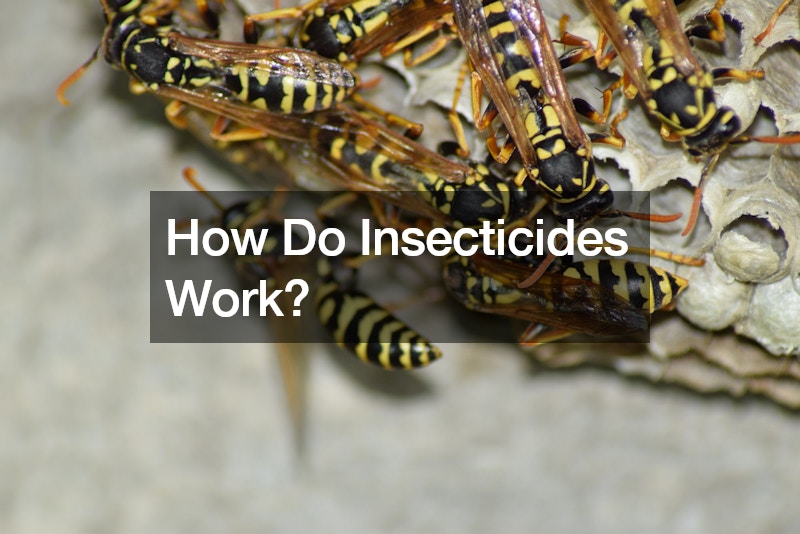
In the eternal battle against household pests, insecticides stand as formidable weapons, capable of vanquishing cockroaches, ants, mosquitoes, and other unwanted intruders. But have you ever wondered how these chemical agents actually work to eradicate pests? In this comprehensive guide, we delve into the intricate mechanisms behind insecticides, unraveling the science that makes them effective in pest control.
The Role of Insecticides in Pest Management
Insecticides serve as crucial tools in pest management, offering a targeted approach to controlling populations of insects that pose threats to human health, agriculture, and property. These chemical formulations are designed to disrupt vital physiological processes in insects, leading to their incapacitation or demise. From household insecticide sprays to agricultural pesticides, these products come in various forms and formulations tailored to specific pest species and application methods.
Understanding Pest Physiology
Before delving into the workings of insecticides, it’s essential to understand the physiological vulnerabilities of pests. Insects, including cockroaches, ants, and mosquitoes, possess unique anatomical and neurological features that make them susceptible to chemical interventions.
For instance, cockroaches boast a protective exoskeleton that shields them from external threats, yet it also presents opportunities for insecticides to penetrate their systems through small openings and spiracles.
Disrupting Neural Pathways
One of the primary mechanisms of action employed by insecticides involves targeting the nervous system of pests. Insects rely on intricate neural pathways to transmit signals from their brains to various parts of their bodies, governing vital functions such as movement, feeding, and reproduction. Insecticides contain neurotoxic compounds that disrupt these neural pathways, leading to paralysis, convulsions, and eventual death in targeted pests.
The Role of Sodium Channels
At the heart of the insect nervous system lie Voltage-gated Sodium channels, critical components responsible for maintaining the strength of nerve impulses. These channels regulate the flow of sodium ions across neuronal membranes, allowing for the propagation of electrical signals essential for normal physiological functions. Insecticides, such as Pyrethrins and Pyrethroids, target these Sodium channels, interfering with their normal functioning.
Impact on Neuronal Function
When insects come into contact with insecticide spray, the neurotoxic compounds contained within the formulation disrupt the function of Sodium channels in their nervous systems. By preventing these channels from closing properly, the insecticides keep them open, allowing an influx of sodium ions into the neurons. This influx depolarizes the neuronal membrane, rendering it unable to propagate nerve impulses effectively.
Paralysis and Death
As a result of the disruption to their neural function, insects experience paralysis and eventual death. The paralysis may manifest as immobility, convulsions, or spasms, depending on the specific mode of action of the insecticide. Without the ability to perform essential functions such as feeding or flying, the affected pests succumb to the effects of the insecticide, either through direct exposure or indirect ingestion.
Application Methods and Formulations
Insecticides come in various formulations tailored to different application methods and target pests. Common formulations include aerosols, dusts, baits, and liquid concentrates, each designed to deliver the active ingredients effectively to the target insects. Whether applied as a residual barrier, a space spray, or a bait station, insecticides offer versatile solutions for controlling pest populations in diverse environments.
Environmental Considerations
While insecticides play a crucial role in pest management, their use raises important considerations regarding environmental impact and human safety. Pesticide formulations undergo rigorous testing and regulation to ensure their efficacy and safety for non-target organisms, including humans, pets, and beneficial insects. Integrated Pest Management (IPM) strategies advocate for the judicious use of insecticides alongside non-chemical control methods to minimize environmental risks and promote sustainable pest control practices.
Insecticides come in various types, each designed to target specific pests and address different pest control needs. Some common types of insecticides include:
1. Contact Insecticides: These insecticides kill pests upon direct contact by penetrating their exoskeleton or interfering with their nervous system. Contact insecticides are often used for immediate control of crawling insects like cockroaches, ants, and bed bugs.
2. Systemic Insecticides: Systemic insecticides are absorbed by plants and translocated throughout their vascular system, making them toxic to insects that feed on the plant tissue. These insecticides are effective against sucking insects like aphids, whiteflies, and leafhoppers.
3. Ingested Insecticides: Also known as stomach poisons, ingested insecticides are ingested by pests when they consume treated plant material or bait. These insecticides disrupt the digestive system or nervous system of the pest, leading to their demise. Examples include granular baits for ants and caterpillars.
4. Residual Insecticides: Residual insecticides remain active on treated surfaces for an extended period, providing long-lasting control of pests. They are commonly used for indoor and outdoor perimeter treatments to target crawling and flying insects like spiders, mosquitoes, and flies.
5. Insect Growth Regulators (IGRs): IGRs disrupt the development and reproduction of insects by mimicking or inhibiting the action of insect hormones. These insecticides are effective against immature stages of insects like larvae and pupae, preventing them from reaching adulthood and reproducing.
Conclusion
Insecticides represent powerful tools in the ongoing battle against pests, offering targeted solutions for controlling populations of insects that threaten human health and well-being. By disrupting vital physiological processes in pests, these chemical agents effectively incapacitate or eliminate targeted species, providing relief from infestations and safeguarding property and resources. However, responsible use and adherence to safety guidelines are paramount to mitigate environmental risks and ensure the long-term effectiveness of insecticide-based pest control strategies.
.
